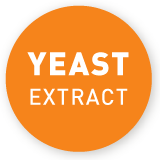Recent years have seen an increase in the purchase of meat alternatives in Europe. In Germany, Rügenwalder Mühle, a German producer of meat alternatives that is traditionally known for its animal meat sausages, has revealed that its sales of vegetarian and vegan meats surpassed its meat sales in 2021 for the very first time. This fits the decrease in meat consumption in Germany: last year, the consumption fell by 2kg to 55kg per person – a record low.
Veganism or vegetarianism is no longer only a trend. Meat alternatives and the ever-increasing quantity of vegan and vegetarian recipes you can easily cook at home prove the contrary. For ensuring a savory taste, yeast extract is often used in vegan or vegetarian cooking. It provides a savory and meaty flavor to plant-based dishes even though it is completely free of animal ingredients.
Yeast extract even is a totally natural and vegan ingredient that is made up of the natural components of the yeast cell: proteins, amino acids, carbohydrates, vitamins and minerals. Within these ingredients, it is primarily the mix of proteins and amino acids that provide yeast extract with its unique umami taste.
Another characteristic that makes it an ideal ingredient for vegan and vegetarian dishes is its sustainable production: when producing yeast extract, by-products from other areas of food production are used and also the by-products that are generated during yeast extract production are reused. Therefore, it is not only a suitable ingredient for everyone who pursues a plant-based diet but also for those who aim to include sustainability in their everyday lives.
If you are looking for inspiration on what to cook with yeast extract, you can have a look at our “Food around the world” project. Bloggers from all over the world created savory vegan and vegetarian recipes with yeast extract: Food around the world | Yeast Extract




